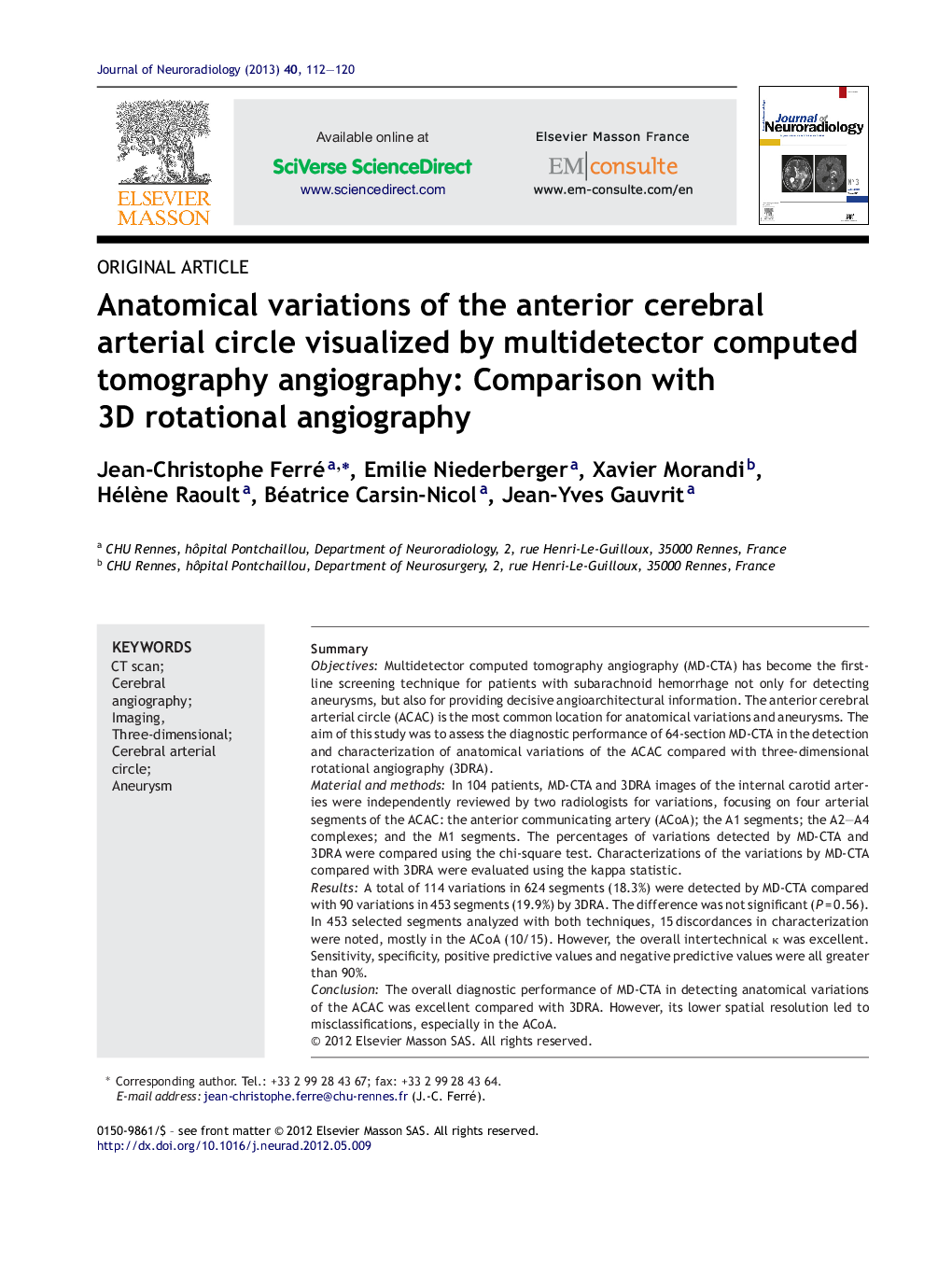| Article ID | Journal | Published Year | Pages | File Type |
|---|---|---|---|---|
| 4233999 | Journal of Neuroradiology | 2013 | 9 Pages |
SummaryObjectivesMultidetector computed tomography angiography (MD-CTA) has become the first-line screening technique for patients with subarachnoid hemorrhage not only for detecting aneurysms, but also for providing decisive angioarchitectural information. The anterior cerebral arterial circle (ACAC) is the most common location for anatomical variations and aneurysms. The aim of this study was to assess the diagnostic performance of 64-section MD-CTA in the detection and characterization of anatomical variations of the ACAC compared with three-dimensional rotational angiography (3DRA).Material and methodsIn 104 patients, MD-CTA and 3DRA images of the internal carotid arteries were independently reviewed by two radiologists for variations, focusing on four arterial segments of the ACAC: the anterior communicating artery (ACoA); the A1 segments; the A2–A4 complexes; and the M1 segments. The percentages of variations detected by MD-CTA and 3DRA were compared using the chi-square test. Characterizations of the variations by MD-CTA compared with 3DRA were evaluated using the kappa statistic.ResultsA total of 114 variations in 624 segments (18.3%) were detected by MD-CTA compared with 90 variations in 453 segments (19.9%) by 3DRA. The difference was not significant (P = 0.56). In 453 selected segments analyzed with both techniques, 15 discordances in characterization were noted, mostly in the ACoA (10/15). However, the overall intertechnical κ was excellent. Sensitivity, specificity, positive predictive values and negative predictive values were all greater than 90%.ConclusionThe overall diagnostic performance of MD-CTA in detecting anatomical variations of the ACAC was excellent compared with 3DRA. However, its lower spatial resolution led to misclassifications, especially in the ACoA.
